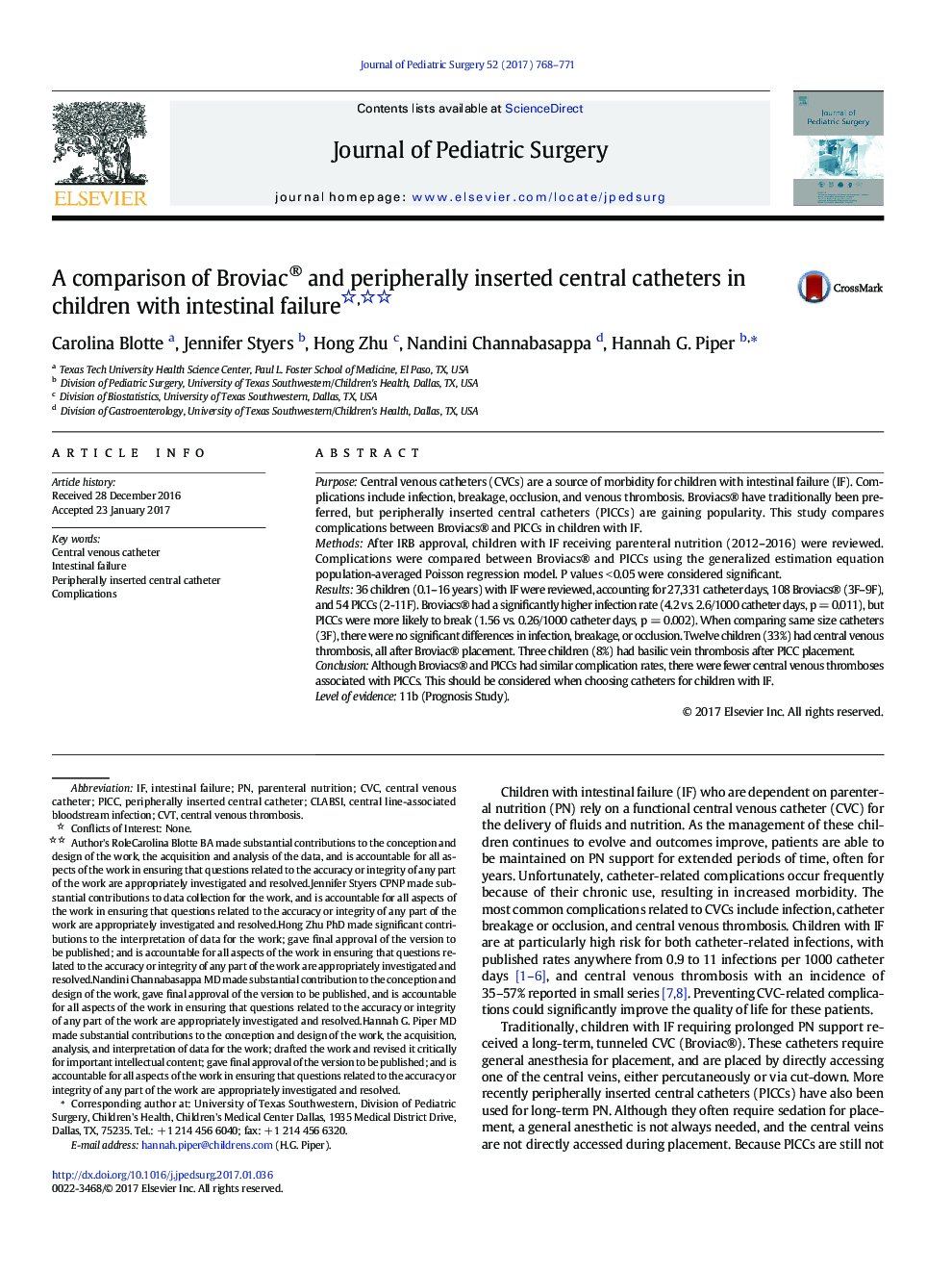| Article ID | Journal | Published Year | Pages | File Type |
|---|---|---|---|---|
| 5718461 | Journal of Pediatric Surgery | 2017 | 4 Pages |
PurposeCentral venous catheters (CVCs) are a source of morbidity for children with intestinal failure (IF). Complications include infection, breakage, occlusion, and venous thrombosis. Broviacs® have traditionally been preferred, but peripherally inserted central catheters (PICCs) are gaining popularity. This study compares complications between Broviacs® and PICCs in children with IF.MethodsAfter IRB approval, children with IF receiving parenteral nutrition (2012-2016) were reviewed. Complications were compared between Broviacs® and PICCs using the generalized estimation equation population-averaged Poisson regression model. P values < 0.05 were considered significant.Results36 children (0.1-16 years) with IF were reviewed, accounting for 27,331 catheter days, 108 Broviacs® (3F-9F), and 54 PICCs (2-11F). Broviacs® had a significantly higher infection rate (4.2 vs. 2.6/1000 catheter days, p = 0.011), but PICCs were more likely to break (1.56 vs. 0.26/1000 catheter days, p = 0.002). When comparing same size catheters (3F), there were no significant differences in infection, breakage, or occlusion. Twelve children (33%) had central venous thrombosis, all after Broviac® placement. Three children (8%) had basilic vein thrombosis after PICC placement.ConclusionAlthough Broviacs® and PICCs had similar complication rates, there were fewer central venous thromboses associated with PICCs. This should be considered when choosing catheters for children with IF.Level of evidence11b (Prognosis Study).
